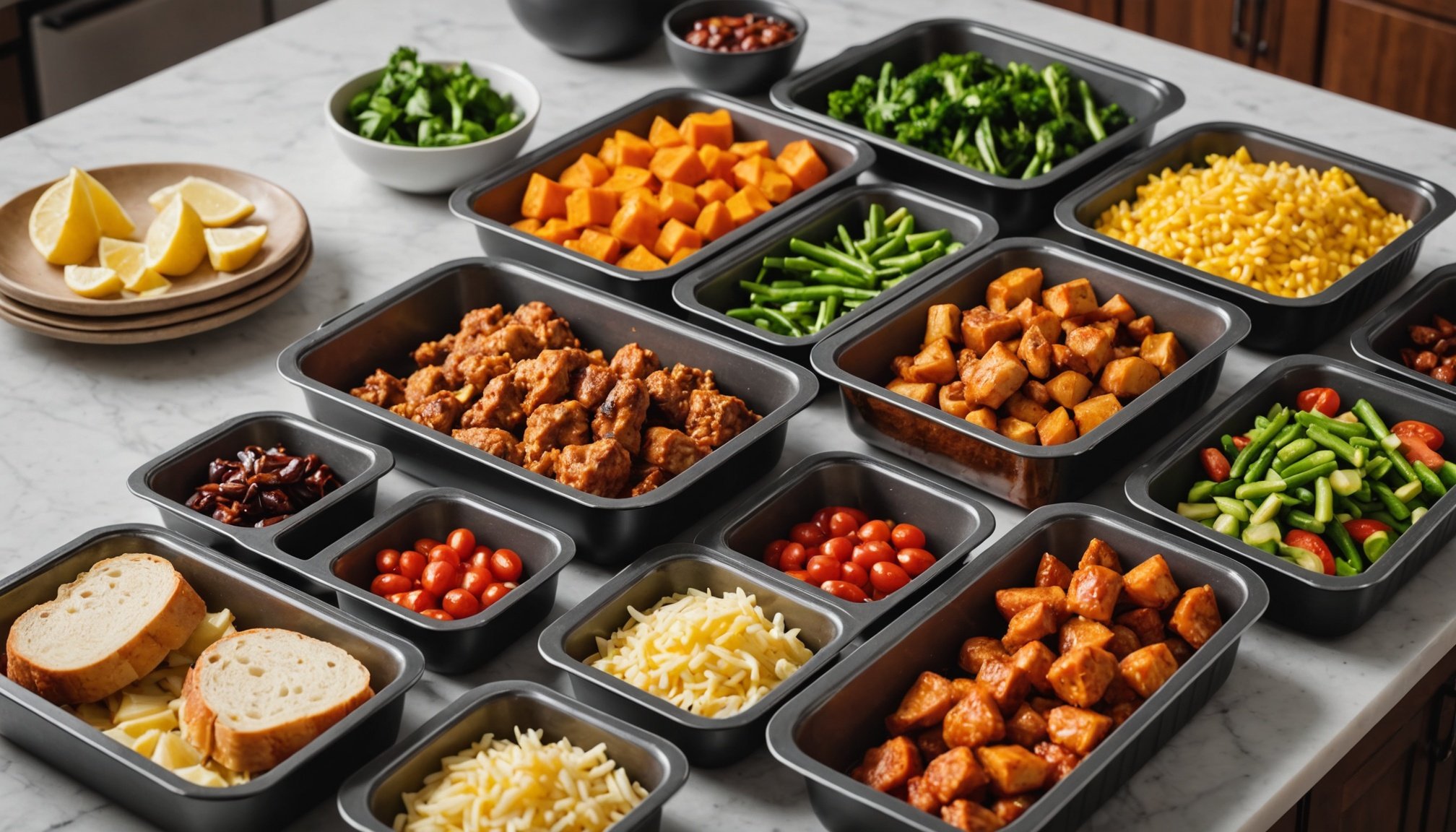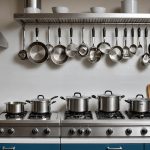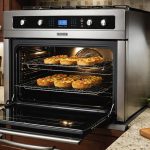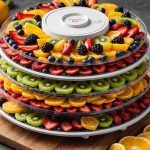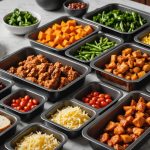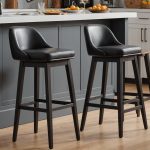Essential Storage Solutions
When it comes to kitchen organization, accessible storage is crucial for maintaining a healthy diet, particularly for individuals managing diabetes. Proper storage not only helps keep healthy ingredients within easy reach but also supports efficient diabetic meal prep storage.
For a well-organized pantry, consider designs that prominently display diabetic-friendly foods. This ensures easy access and visibility, which can guide healthier food choices. Incorporating adjustable shelving can accommodate varying sizes of containers, while clear labeling assists in quick identification.
Additional reading : Uncover top ergonomic bar stools for enhanced sitting comfort and better digestion in your kitchen
To maintain order, use drawer dividers and baskets to separate different food categories. This method facilitates quick access to necessary ingredients and helps prevent confusion during meal prep. For instance, group together low-sugar snacks or place diabetic meal prep supplies in designated areas.
Additionally, investing in stackable storage containers can optimize space, ensuring you have ample room for all your essentials without clutter. Clear containers allow for easily seeing the contents, streamlining the process of selecting the right ingredients for meal prep.
Have you seen this : Unveiling the perfect blue tones for your kitchen: shades that satisfy your palette while promoting weight loss
Efficient organization not only supports health goals but also transforms your kitchen into a space of comfort and functionality, making diabetic meal prep a fulfilling practice.
Countertop Materials for Healthier Meal Prep
When it comes to meal prep surfaces, making an informed choice of countertop materials is crucial for maintaining both food safety and kitchen efficiency. Non-porous surfaces such as quartz or stainless steel are ideal as they are resistant to bacteria and easy to clean. These countertops prevent moisture absorption, reducing the risk of contamination—a considerable concern in a health-focused kitchen. Opting for materials like granite or butcher block may require more maintenance due to their porous nature, which can harbour germs if not properly sealed.
Heat resistance and durability are also key when choosing countertops. For instance, materials like engineered stone withstand high temperatures, allowing hot pots to be placed directly on the surface without risk of damage. This property is beneficial for continuous cooking, where quick transitions are needed.
Furthermore, incorporating countertops in neutral shades can foster a clean and calming atmosphere, contributing to a functional kitchen design. Not only do these materials enhance the aesthetic appeal, but they also align with the overall purpose of creating a kitchen dedicated to healthy, efficient meal preparation. This careful selection of materials supports both form and function in the kitchen.
Visual Enhancements and Aesthetics
A kitchen’s aesthetic plays a vital role in making it a conducive space for healthy cooking, particularly for diabetic-friendly meal prep. Thoughtful kitchen design aesthetics not only uplift the visual appeal but also integrate functionality.
Incorporating soothing colour schemes, such as soft blues or greens, can promote a calming environment, encouraging more enjoyable cooking experiences. Furthermore, the strategic use of lighting enhances functionality, illuminating key areas such as countertops and cooking zones. It provides both functionality and ambiance, assisting in precise meal preparation.
To strike a balance between visual appeal and practicality, consider functional decor elements. For example, decorative jars can serve as both storage and display for frequently used diabetic-friendly ingredients. Functional decor like this seamlessly blends aesthetics with utility.
Lastly, integrating natural materials and textures can contribute to a warm and inviting kitchen atmosphere. This approach mirrors the natural simplicity and balance one seeks in a health-focused kitchen environment. By prioritizing both design and functionality, you ensure that your kitchen remains a welcoming and efficient space, steering you towards healthier culinary habits.
Appliances That Support Healthy Cooking
In a health-focused kitchen, utilizing diabetic-friendly appliances can transform your cooking routine into one that supports low-fat eating and portion control. Must-have appliances include air fryers and steam ovens, which allow for calorie-conscious cooking without sacrificing flavour or texture. These gadgets help reduce the need for oils, promoting a healthier meal preparation approach.
Incorporating smart appliances like intelligent cookers or multi-functional blenders can significantly streamline the meal prep process. They often come with programmable settings that automate cooking and precision controls for exact nutrition management. Through connected apps and voice controls, these appliances can adapt recipes, optimising the cooking time and ensuring consistent results.
The significance of portion control tools cannot be understated in regulating ingredients, particularly in a diabetic diet. Devices like digital scales or portion control plates not only assist in measuring precise quantities but also aid in visualising correct portion sizes. This functionality helps prevent overconsumption and aids in maintaining dietary goals.
Investing in these cooking technologies enhances the efficiency and convenience of meal preparation, empowering those focused on health to maintain a nutritious and balanced diet with ease.
Functional Kitchen Layouts
In a kitchen layout for diabetics, designing spaces with an efficient meal prep design is key to enhancing productivity and ease of use. A well-thought-out arrangement can minimize unnecessary movement, saving time and reducing fatigue.
Creating specific workflow zones is essential for efficient meal preparation. Organise your kitchen into distinct task areas: one for prep, another for cooking, and a separate section for storage. This approach not only helps in managing tasks but also ensures that all necessary tools and ingredients are within easy reach, facilitating smoother operations.
Ergonomic design plays a crucial role in the overall cooking workflow. Incorporate features like appropriately heighted countertops and accessible cabinets to reduce strain on the body, making the cooking process more comfortable and efficient.
Consider the working triangle concept, connecting the stove, sink, and fridge to streamline movements and improve functionality. By optimising kitchen layout, you’ll create a supportive environment for diabetic meal prep, improving overall cooking experience and encouraging healthier eating habits.
Innovation in kitchen layouts not only enhances functionality but also empowers users to maintain precise control over their dietary needs, making meal prep an enjoyable and uncomplicated task.
Helpful Tools and Resources
Having the right meal prep tools and resources fosters a health-focused kitchen. Essential tools such as measuring spoons and cups ensure portion control, enabling precise management of ingredients. Digital scales and portion control plates are invaluable for maintaining dietary balance, particularly important in a diabetic-friendly context.
Delving into diabetic cookbooks can expand your culinary repertoire, providing new, nutritious meal ideas that cater to specific dietary needs. Consider titles like “The Diabetes Plate Method” or “Diabetic Living Diabetes Meals by the Plate,” which offer easy-to-follow recipes tailored for diabetes management. Such books make meal preparation straightforward and inspiring.
Incorporating technology, meal-planning apps streamline grocery shopping and cooking. Apps such as Yummly or Mealime allow easy selection and organisation of recipes, automatically generating shopping lists based on the meals chosen. These tools simplify the cooking process, ensuring time-efficient and health-conscious meal plans.
By tapping into these resources, creating nutritious meals becomes an efficient and rewarding endeavour, aligning with the broader goal of sustaining a healthy lifestyle.

